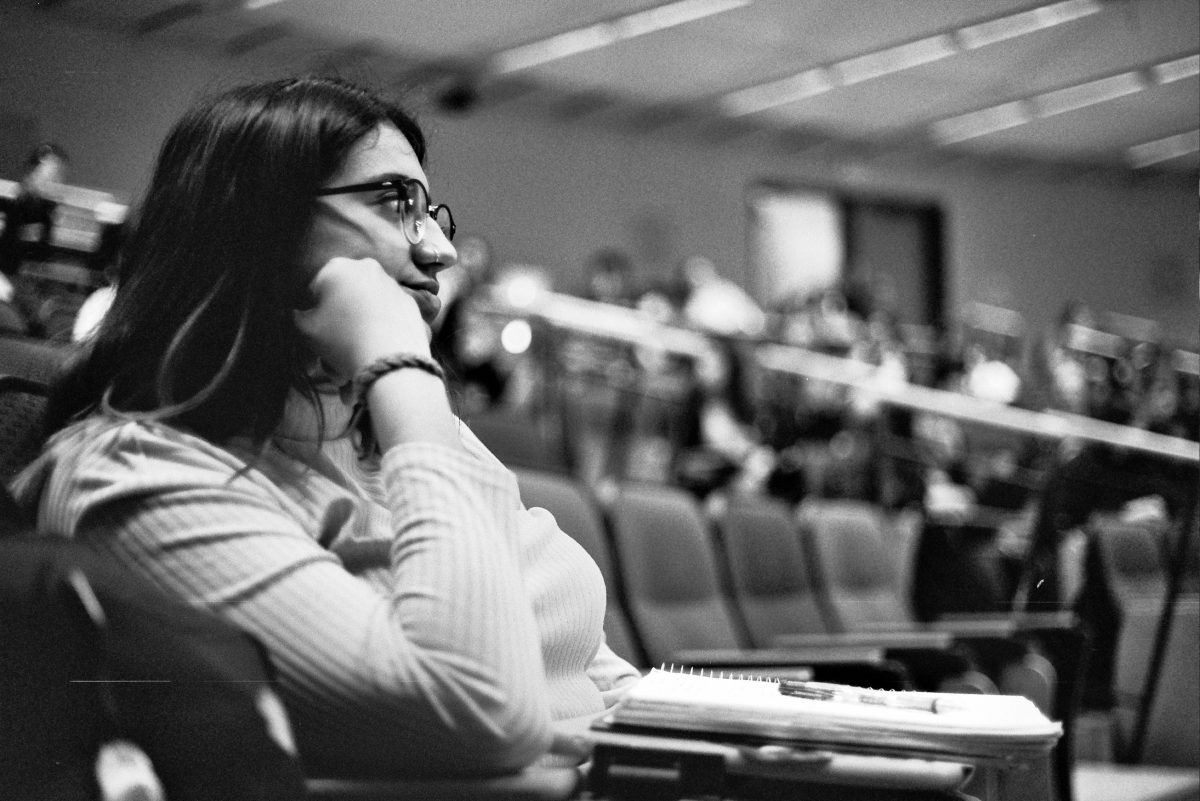Tarragona, a small Catalonian town, is nestled on the coast of the Mediterranean Sea, just a 45-minute train ride from Barcelona, Spain. Upon first glance, it appears to be a town enclosed by an ancient stone fortress. After entering through those century-old gated walls, my friends and I stepped on the uneven cobblestone streets and admired the multi-colored, hole-in-the-wall shops. I was studying abroad with Semester at Sea during the fall of 2017, and my friends and I were ecstatic to explore Spain, the first port of our voyage.
We walked up and down crumbling stairs in narrow alleyways—a maze that we could get lost in for hours. The rich history of the town juxtaposes the youthful laughter that flits around its sharp corners. The families who reside here attend church on the top of a hill every Sunday. It’s a quaint, quiet place. But once a year during the humid month of September, the little town of Tarragona transforms into the thundering Santa Tecla Festival—a two-week long celebration in honor of the town’s patron saint. The streets are filled with music and dancing. The smell of fresh paella and red wine wafts through the air. The buzzing anticipation is palpable as everyone awaits the festival’s crowning moment.
I stood in awe amidst a crowd of thousands as I witnessed the formation of courageously tall human pyramids in Tarragona’s town square. These human towers, or castells as they’re called in Spain, can reach up to 10 stories high. I craned my neck under the rays of the relentless sun to watch these 60-foot structures come to life. The participants, known as castellers, span generations: from elderly people to spritely 5-year-olds bouncing with energy.
The castellers start by creating a base called the pinya. They weave their limbs into a vast lattice work on the ground level. The pinyas take the most time to create because they have to be strong enough to support the upper part of the structure. They also act as a net in case the tower comes crashing down.
A hush fell over the crowd when the local band began to play the Toc de Castells music, which indicates that the second phase has begun. The castellers on the upper layers work quickly to minimize the strain on the pinya. The larger, burlier men make up the primary layers. The castellers comprising each subsequent level become more lithe and lean as the formation grows taller.
Climbers use the sashes around team members’ waists to hoist themselves up. The youngest (and lightest) team members endure the most heart-pounding ascents. They are the ones who scramble to the very top of these thrilling 60-foot towers with only helmets for protection. My friends squeezed my hands in anticipation every time a child scurried to the top. Once these daring children reached the pinnacle of the castell the crowd would explode into thunderous applause.
But the most treacherous part had yet to come. The rapid movement in the descent caused some castells to become unstable. My breath hitched every time one wobbled. The crowd would hush each other to give the castellers the silence that they needed in order to get the formation back under control. Bad endings happened frequently, resulting in hundreds of bodies toppling to the ground. We all gasped when the castells crumbled and stared on in horror as little 6-year-olds fell from 60-feet up in the sky.
But don’t worry, every child that I saw scurried away without a scratch. Castellers in the pinya, however, were sometimes not so lucky. Medics were on hand to rush the fallen to the hospital to mend bruised muscles and broken bones. And although it’s rare, fatalities have occurred in past competitions.
It’s a bold and dangerous sport. So why would anyone—let alone hundreds of people— take the risk?
To start, it’s a tradition steeped in rich history. The first human pyramid was built in 1712 in the city of Valls, just 12 miles away from Tarragona. From their conception, castells were a way to celebrate community at local festivals. As the centuries passed, the tradition began to spread to other parts of Spain.
In the 1980s, women were permitted to join colles castelleres, Spanish for castell teams. This decision revolutionized the sport because it allowed for the creation of taller, more complex structures. In 2010, UNESCO inducted castells into the Masterpieces of the Oral and Intangible Heritage of Humanity, and today, the castell building tradition is widely practiced throughout Catalonia.
The four official colles castelleres that compete during the Santa Tecla Festival practice year round. The winners of this prestigious competition bring immense pride to their community (aka bragging rights), yet the tradition persists.
I’ve spent hours pondering how building castells is even an achievable human feat. I’m sure that there’s a scientific answer regarding weight distribution, but from what I witnessed from my brief observation, the key is determination. The castellers demonstrated the power of unwavering conviction, and if you’re going to be creating monumental human pyramids, you need to have a lot of it.
My friends and I stood mesmerized in the broiling Spanish heat for two hours with our heavy backpacks because we were viewing the extraordinary. The fearlessness of the castellers’ movements was captivating and awe-inspiring. I could feel the complete trust that each person placed in their teammates beneath and above them.
I’ve never experienced such pure, intimate compassion. The teamwork required to build the castells bridged gender, age and ethnicity. I was witnessing selflessness in its most pure form.
I was watching the best bits of humanity play out before me. The castellers were creating something magnificent from their flesh and bone through direct communication and tight strategy. My heart surged with joy and a puzzling sense of pride whenever a castell rose triumphantly above the crowd. I was confused by these emotions in the moment since I was only a visitor. I didn’t know anything about the people in the crowd around me. I had never met any of the castellers, so why was I so invested in their success?
Looking back, I now understand why I felt so accepted and welcomed into the community of Tarragona. Even though I was simply an observer, I picked up on the profound camaraderie in the castells and the crowd. The towers were literal symbols of strength, family and love.The Santa Tecla Festival created a unique moment in time where people were literally lifting each other up. Foot by foot. Hand in hand. Finger by finger. And all of this could happen in a little town by the sea.








![[Photo Courtesy of the Lara Family]
Ruben embraces his beloved childhood goat, Katrina.](https://ethos.dailyemerald.com/wp-content/uploads/2025/05/katrina-1-1060x1200.jpg)


